Captive Breeding
Since its conception as the Mount Bruce reserve, the area today known as Pūkaha National Wildlife Centre has long been involved in captive breeding programmes for native species.
Today our main focus is on reestablishing populations of native birds across New Zealand, and as such we are actively involved with other national-level groups and recovery programmes.
Tūturuatu/Shore Plover
These breed well, usually 2-3 clutches per pair per year. We hand-rear the first clutch with the parent raising the last. They are released to Motutapu Island.
Birds released in last decade
Whio / Blue Duck
Hymenolaimus malacorhynchos
Conservation Status: Nationally vulnerable
There is one active breeding pair.
These birds are hand- and parent-raised at Pūkaha before being sent for ‘fast water training’ at Tongariro National Trout Centre. They are then released into the wild around Tongariro/Whanganui.
Birds released in last decade
Kākā / Bush Parrot
Nestor meridionalis
Conservation Status: Recovering
Pūkaha houses two breeding pairs and one foster pair in the aviaries.
All kākā in the reserve were released as part of previous breeding programmes.
We rear North Island and South Island birds, sending a good number of the former to Sanctuary Mountain in the Waikato region– look out for our green-banded birds!
Birds released in last decade
Kiwi
Apteryx mantelli
Conservation status: Declining
We hatch and raise kiwi eggs from our forest as part of the Operation Nest Egg endeavour to help maintain kiwi survival numbers. These birds are then released into the wild once they have reached 1200 grams.
Since 2019 we have collaborated with various kiwi reserves from around New Zealand, raising their chicks until they are old enough to be returned to where they came from, usually entering a ‘kiwi creche’ on their home turf before entering the wild.
Birds released in last decade
Pāteke / Brown Teal
Anas chlorotis
Conservation Status: Recovering
One breeding pair can be found in the free-flight aviary while the other is off-display, each laying 2-3 clutches each season. This totals around 12-18 duckling per pair.
After being raised at Pūkaha, they are sent down to Isaac Conservation and Wildlife Trust in Christchurch, where they receive ‘training’ before being released into the wild.
Birds released in last decade
Kākāriki
Cyanoramphus spp.
Red Crowned Kākāriki
Conservation status: Relict
Yellow Crowned Kākāriki
Conservation status: Not Threatened
Orange-Fronted Parakeet
Conservation status: Nationally Critical
The red-crowned kākāriki captive breeding programme has been one of our most successful.
In a short number of years, we have raised a large percentage of birds that have gone on to find homes in the wild at places such as Cape Sanctuary.
The orange-fronted and yellow-crowned are new to the breeding agenda.
Birds released in last decade
Kōkako / Blue Wattled Crow
Callaeas wilsoni
Conservation Status: Recovering
The kōkako programme was one of Pūkaha’s largest, with the last release being in 2011.
All wild kōkako in the Pūkaha forest were part of this programme.
Tītipounamu / Rifleman
Acanthisitta chloris
Conservation Status: Not threatened
Although we do not actively breed this tiny endemic bird, we do monitor their breeding in the wild.
We place safe nesting boxes throughout the Pūkaha forest, and informally investigate situations where these boxes are not used.
